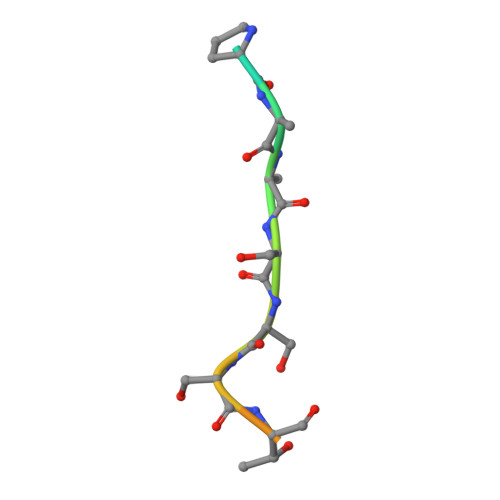SPOP Promotes Tumorigenesis by Acting as a Key Regulatory Hub in Kidney Cancer.
Li, G., Ci, W., Karmakar, S., Chen, K., Dhar, R., Fan, Z., Guo, Z., Zhang, J., Ke, Y., Wang, L., Zhuang, M., Hu, S., Li, X., Zhou, L., Li, X., Calabrese, M.F., Watson, E.R., Prasad, S.M., Rinker-Schaeffer, C., Eggener, S.E., Stricker, T., Tian, Y., Schulman, B.A., Liu, J., White, K.P.(2014) Cancer Cell 25: 455-468
- PubMed: 24656772
- DOI: https://doi.org/10.1016/j.ccr.2014.02.007
- Primary Citation of Related Structures:
4O1V - PubMed Abstract:
Hypoxic stress and hypoxia-inducible factors (HIFs) play important roles in a wide range of tumors. We demonstrate that SPOP, which encodes an E3 ubiquitin ligase component, is a direct transcriptional target of HIFs in clear cell renal cell carcinoma (ccRCC). Furthermore, hypoxia results in cytoplasmic accumulation of SPOP, which is sufficient to induce tumorigenesis. This tumorigenic activity occurs through the ubiquitination and degradation of multiple regulators of cellular proliferation and apoptosis, including the tumor suppressor PTEN, ERK phosphatases, the proapoptotic molecule Daxx, and the Hedgehog pathway transcription factor Gli2. Knockdown of SPOP specifically kills ccRCC cells, indicating that it may be a promising therapeutic target. Collectively, our results indicate that SPOP serves as a regulatory hub to promote ccRCC tumorigenesis.
Organizational Affiliation:
Key Laboratory of Genome Sciences and Information, Beijing Institute of Genomics, Chinese Academy of Sciences, Beijing 100101, China; University of Chinese Academy of Sciences, Beijing 100049, China.















